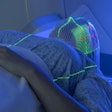A new report from the Childhood Cancer Survivor Study confirms another late toxicity that dentists have long suspected: radiation exposure to the face during treatment as a child increases the risk of bad teeth and a wide range of dental abnormalities as an adult.
Childhood cancer survivors are between one and five times more likely to develop a dental health issue, according to a study published online in Cancer (October 15, 2009). Risk is directly correlated with the amount of radiation exposure to teeth and gums, with children who were exposed to more than 20 Gy of radiation having a four-fold to 10-fold higher risk of developing dental abnormalities.
The analysis evaluated self-reported dental health problems from a 2003 survey completed by 8,522 patients treated successfully for childhood cancer between 1970 and 1985 and 2,831 of their siblings.
The survey obtained information about number of cavities, number of teeth lost to decay and gum disease, missing teeth that never developed (hypodontia), abnormally shaped teeth (microdentia), lack of enamel on teeth (enamel hypoplasia), gum diseases (gingivitis), and dry mouth (xerostomia). Survey recipients were also asked if they wore dentures, dental bridges, or an oral prosthesis.
Because routine dental hygiene varies widely, and the reporting of some dental abnormalities may depend upon a diagnosis by a dentist, the research team examined associations between the use of dental services and socioeconomic factors. No significant difference was discovered in the use of dental services between survivors and siblings, reported principal investigator Dr. Sue C. Kaste of the department of radiological sciences of St. Jude Children's Research Hospital in Memphis.
However, well-educated Caucasian women with an annual household income greater than $20,000 maintained better dental hygiene with professional teeth cleaning and regularly scheduled dental check-ups than other survey respondents. Sex and socioeconomic factors were correlated with odontogenic toxicity after adjusting for differences in cancer treatment regimes, and also were associated with significant differences in overall healthcare treatment.
Risk ratios for childhood cancer survivors to develop the following dental abnormalities as compared to their siblings calculated from the survey included:
- Xerostomia 9.7
- Microdontia 3.0
- Root abnormalities 4.0
- Teeth loss 2.6
- Abnormal enamel 2.4
- Hypodontia 1.7
- Severe gingivitis 1.2
In addition to radiation dose exposure, children who were exposed to treatment with alkylating agents under the age of five are also at higher risk for developing dental abnormalities.
Based on their findings, the authors recommend that oncologists advise parents of children being treated with radiation therapy and/or alkylating agents of the risk of dental abnormalities, and encourage that patients to be vigilant about maintaining dental health.
Related Reading
Risk of thyroid cancer increased in childhood cancer survivors, October 28, 2009
Childhood cancer survivors susceptible to diabetes, August 11, 2009
Passport for Care aids follow-up of childhood cancer survivors, April 13, 2009
Copyright © 2009 AuntMinnie.com



















